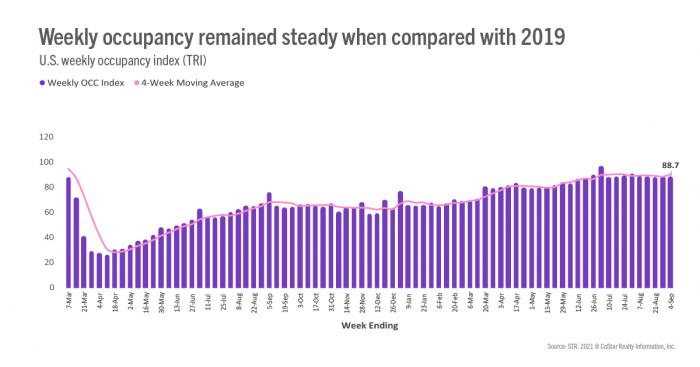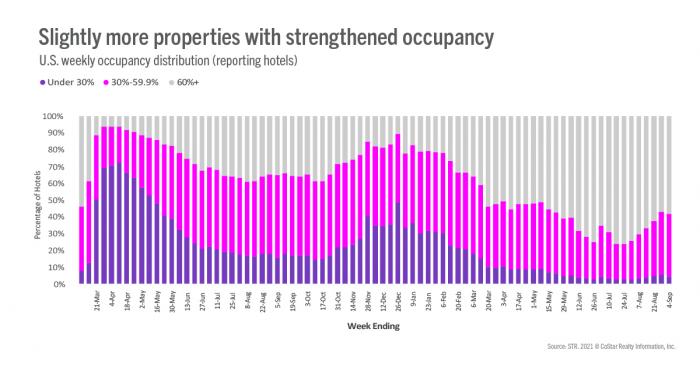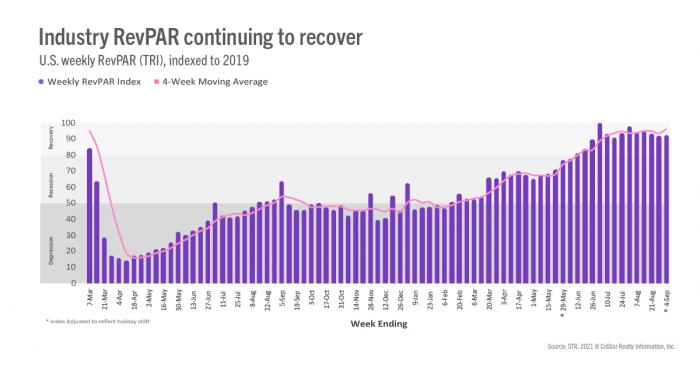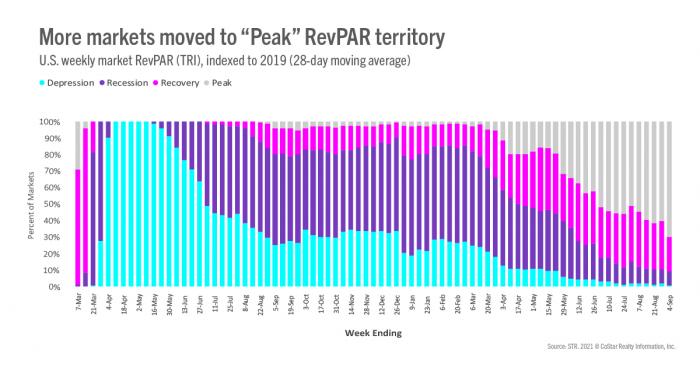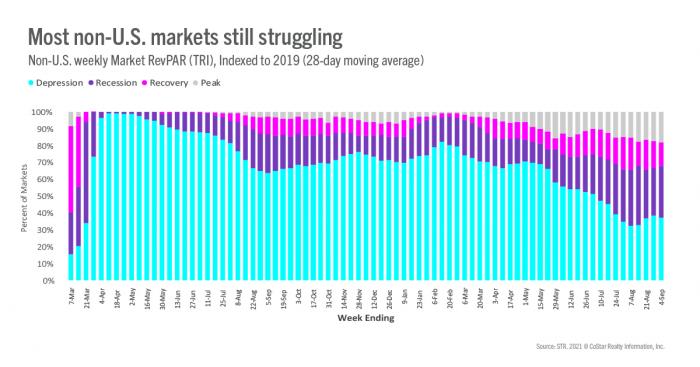Previous MRM versions: 21 August | 28 August
Week ending 4 September
After falling for the past five weeks, occupancy bounced back as Labor Day leisure travel and Hurricane Ida-related demand drove a level of 61.3% during 29 August-4 September. Weekend occupancy (Friday and Saturday) increased to 77%, which was the country’s highest since the first week of August. When compared with Labor Day weekend 2019, which was a week earlier that year, occupancy was nearly the same, indicating the desire to travel remains strong despite the increase in COVID cases, and the declines seen over the past several weeks are more due to the return of in-person schools and the slow materialization of business and group travel. On a total-room-inventory basis (TRI), which accounts for temporarily closed hotels, weekly occupancy was 58.8%.
